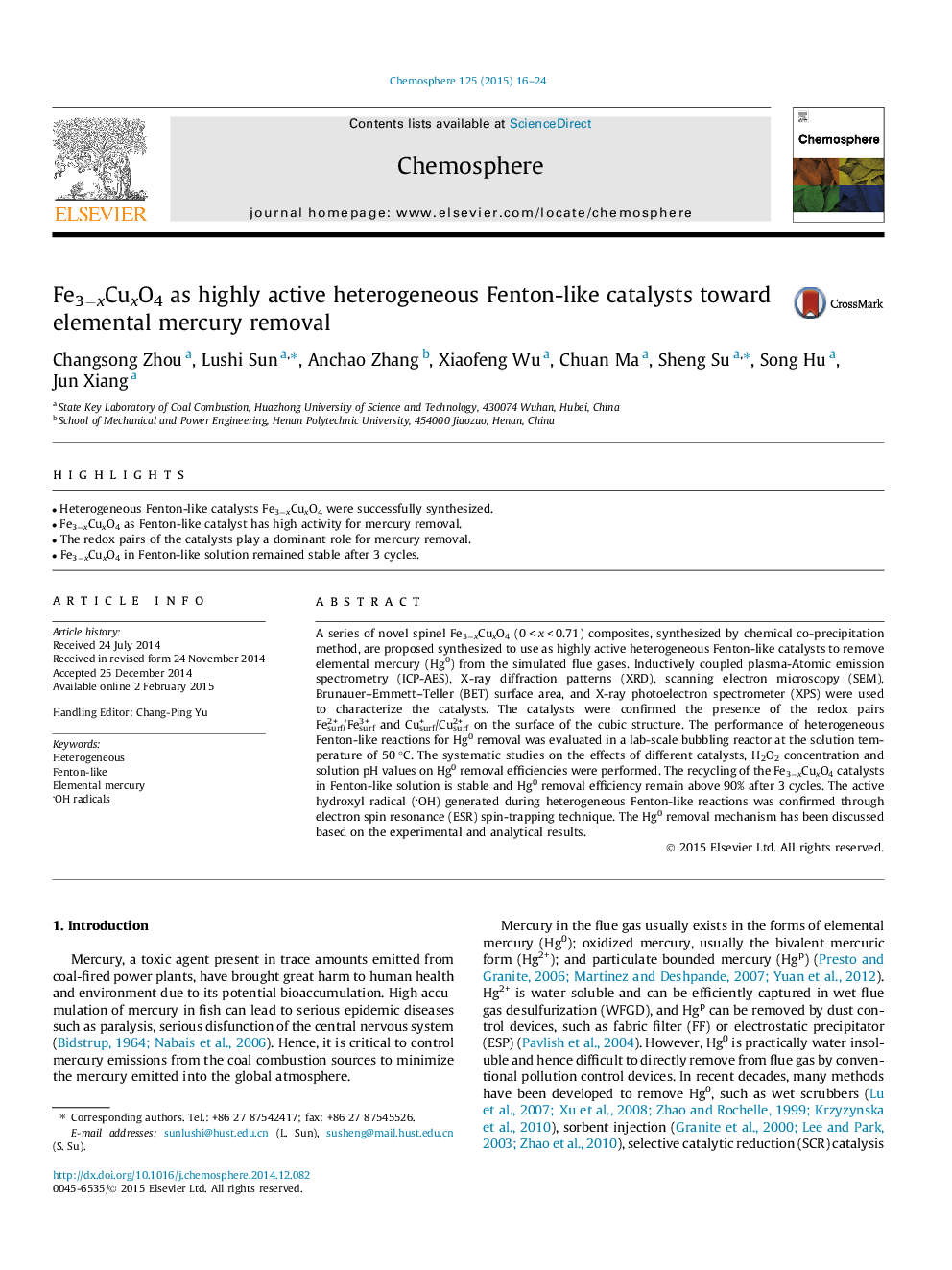| Article ID | Journal | Published Year | Pages | File Type |
|---|---|---|---|---|
| 4408338 | Chemosphere | 2015 | 9 Pages |
•Heterogeneous Fenton-like catalysts Fe3−xCuxO4 were successfully synthesized.•Fe3−xCuxO4 as Fenton-like catalyst has high activity for mercury removal.•The redox pairs of the catalysts play a dominant role for mercury removal.•Fe3−xCuxO4 in Fenton-like solution remained stable after 3 cycles.
A series of novel spinel Fe3−xCuxO4 (0 < x < 0.71) composites, synthesized by chemical co-precipitation method, are proposed synthesized to use as highly active heterogeneous Fenton-like catalysts to remove elemental mercury (Hg0) from the simulated flue gases. Inductively coupled plasma-Atomic emission spectrometry (ICP-AES), X-ray diffraction patterns (XRD), scanning electron microscopy (SEM), Brunauer–Emmett–Teller (BET) surface area, and X-ray photoelectron spectrometer (XPS) were used to characterize the catalysts. The catalysts were confirmed the presence of the redox pairs Fesurf2+/Fesurf3+ and Cusurf+/Cusurf2+ on the surface of the cubic structure. The performance of heterogeneous Fenton-like reactions for Hg0 removal was evaluated in a lab-scale bubbling reactor at the solution temperature of 50 °C. The systematic studies on the effects of different catalysts, H2O2 concentration and solution pH values on Hg0 removal efficiencies were performed. The recycling of the Fe3−xCuxO4 catalysts in Fenton-like solution is stable and Hg0 removal efficiency remain above 90% after 3 cycles. The active hydroxyl radical (OH) generated during heterogeneous Fenton-like reactions was confirmed through electron spin resonance (ESR) spin-trapping technique. The Hg0 removal mechanism has been discussed based on the experimental and analytical results.
